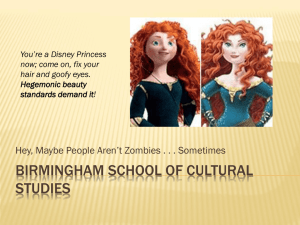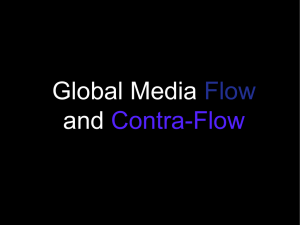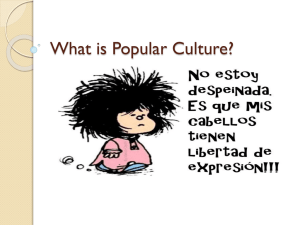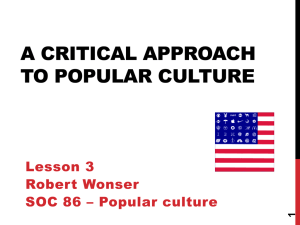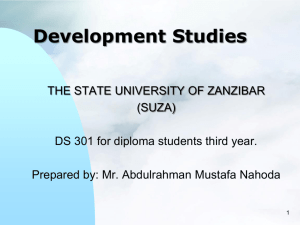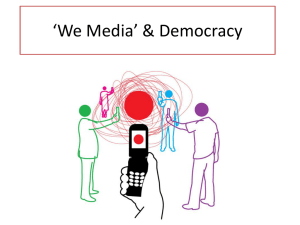Critical Pedagogy
advertisement
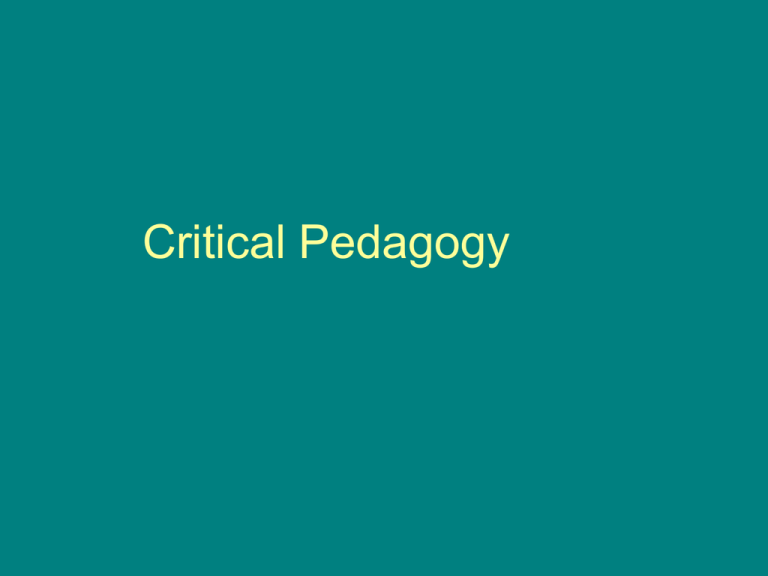
Critical Pedagogy Dialectical theory • Searches out contradictions e.g.children from generation poverty (Beegle, 2003) who face difficulties in school and a system that aspires to help all students to attain “full potential” • Reflects on all elements of social actions: part and whole; subject and object; process and product; rhetoric and reality e.g. a teacher in Ladson-Billing’s study pp. 317 incorporates home language Result of dialectical thinking • As contradictions are discovered • New constructive thinking and new constructive action ( Moll’s et. al research to discover funds of knowledge) • Elements are regarded as mutually constitutive, not separate and distinct (e.g. knowing students’ world as part of teaching and learning process) • Contradiction is not paradox • To speak of contradiction implies a new resolution can be achieved (reconciling home and school differences and similarities in classroom teaching and learning contexts : Julia and Ann legitimate African American culture pp. 316) • Paradox means two ideas are opposed to one another (Black English and Standard English) Dialectical thinking and critical theory • School is a cultural terrain of student empowerment and self-transformation as well as an arena of indoctrination and socialization (relevance of Carlos’ candy sale becomes empowering) • For the critical educator there are many sides to a problem and often these sides are linked to class, race, and gender interests Classroom instruction • Teachers are likely to • emphasize classroom management and behavior • Highlight efficiency and how to do techniques • Ignore important question such as “why is this knowledge being taught in the first place?” » See how the teacher-researcher used the funds of knowledge for relevance (Moll et.al) » See how her research enabled her to connect school subjects, consumer education, health, math, science, cross-cultural practices, advertising, and food production to the lived experiences of her student(s) Instructional objectives • Micro-objectives (most classrooms are engaged in micro-objectives) • Content bound path of inquiry • Characterized by a narrowness of purpose • Concerned with organizational, classification and mastery of data • Vietnam war (suggest micro-objectives and macroobjectives) • Note how micro-objectives tie in with productive knowledge Instructional objectives • Macro-objectives (linked to practical and emancipatory knowledge) • help students to make connections between method, content, and structure of the course • Allows students to acquire a broad frame of reference or worldview • Make the hidden curriculum explicit • Center on relationship between means and ends – thus the relationship between the specific event and the wider social and political implications • Fosters dialectical mode of inquiry Social construction of knowledge Knowledge 1. acquired in school or anywhere is not neutral or objective 2. is a social construction rooted in the nexus of power relations (whose knowledge matters Moll et. al) The world we live in is 1. Constructed symbolically by the mind through social interactions with others 2. Culture, customs, historical specificity influence the social interactions 3. There is a referential field that influence the symbols (language, culture, space, time) Forms of knowledge • Productive knowledge – can be measured and quantified – is evaluated using scores that sort, regulate, and control students • Practical knowledge – aims to enlighten individuals so they can shape their daily actions in the world – it is gathered through describing and analyzing social situations historically and developmentally (funds of knowledge p. 137 Economic lesson) • Emancipatory knowledge - helps us understand how social relationships are distorted and manipulated by relations of power and privilege, it creates the foundation for social justice, equality, and empowerment Critical pedagogy inquires • how and why some constructions of reality are legitimated and celebrated while others are not • how our everyday commonsense understandings (social constructions) get produced and lived out • what are the social functions of knowledge Critical pedagogy questions • • • • Whose interests does certain types of knowledge serve? Who gets excluded as a result? Who is marginalized? What is the relationship between social class and knowledge taught in school? • Why do we value scientific knowledge over informal knowledge? • Why do teachers have to teach using “standard English”? • How does school knowledge reinforce stereotypes about disadvantaged peoples? Culture • A set of practices, ideologies, and values from which different groups draw to make sense of the world (Carlos in Moll p. 137, Ladson-Billings p. 313 • Dominant culture – social practices and representations that affirm central values, interests, and concerns of the social class in control of material and symbolic wealth of society see p. 134 Moll et al • Subordinate culture – groups who live out social relations in subordination to the dominant culture • Subculture – individuals who form subcultures often use distinct symbols and social practices to help foster an identity outside the dominant culture – punk subculture Subcultures Subcultures • Are negotiated than truly oppositional – they operate in the arena of leisure • Offer critique of social order • Reflect a crisis (not conspiracy) within dominant society (e.g. hippie movement of 1960s) Popular culture • Resistance to dominant culture occurs in the popular culture • Prevailing social practices are resisted • Alternative groups do manage to find different values and meanings to regulate their lives • Even in schools sites, exchange, transactions, and struggle occurs between subordinate groups and dominant ideology (teachers resisted when some people wanted to ban Harry Porter) Hegemony • Dominant culture exercises domination over subordinate classes or groups through a process known as hegemony • Hegemony refers to the maintenance of domination through consensual social practices, social forms, and social structures produced in specific sites such as schools, mass media, the political system, and the family Social practices Social practices are: • What people say or do • They are accomplished through words, gestures, rituals, signs or a combination of these * Think of the impact of these words: This is superstitious, this is rational: What gestures may accomplish this? Hegemony as a struggle • The powerful win the consent of the oppressed who unknowingly participate in their oppression • The dominant secures hegemony by supplying symbols, representations, and practices of social life that hide unequal relations of power and privilege • Drawing from Beegle (2003), a child from generational poverty may blame himself for school failure, a failure that can be attributed to the economic structures and class based division of labor Hegemony and common sense • Hegemony as a cultural encasement of meanings seeps into popular common sense and get reproduced • The ruled subscribes to many of the values and objectives of the rulers without being aware of the source of the values and interests which inform them • The dominant supply terms of reference (images, visions, desires, stories, ideals) against which individuals are expected to live their lives Social forms and social structures • Social forms are principles that give legitimacy to specific social practices such as school boards, legislature • Social structures constrains individuals’ control NCLB (with all its testing rituals) was given legitimacy by the federal government. Education structure constrains us all, we have no individual choice in NCLB however opposed we are to the program. Hegemony and worldview • Dominant culture tries to ‘fix” the meaning of signs, symbols, to provide a common worldview • People are provide “subject positions” which condition them to react to ideas and opinions in prescribed ways - subject position such as the – African, middle-eastern, American, as subject positions: what are the symbols and signs associate to these subject positions?
